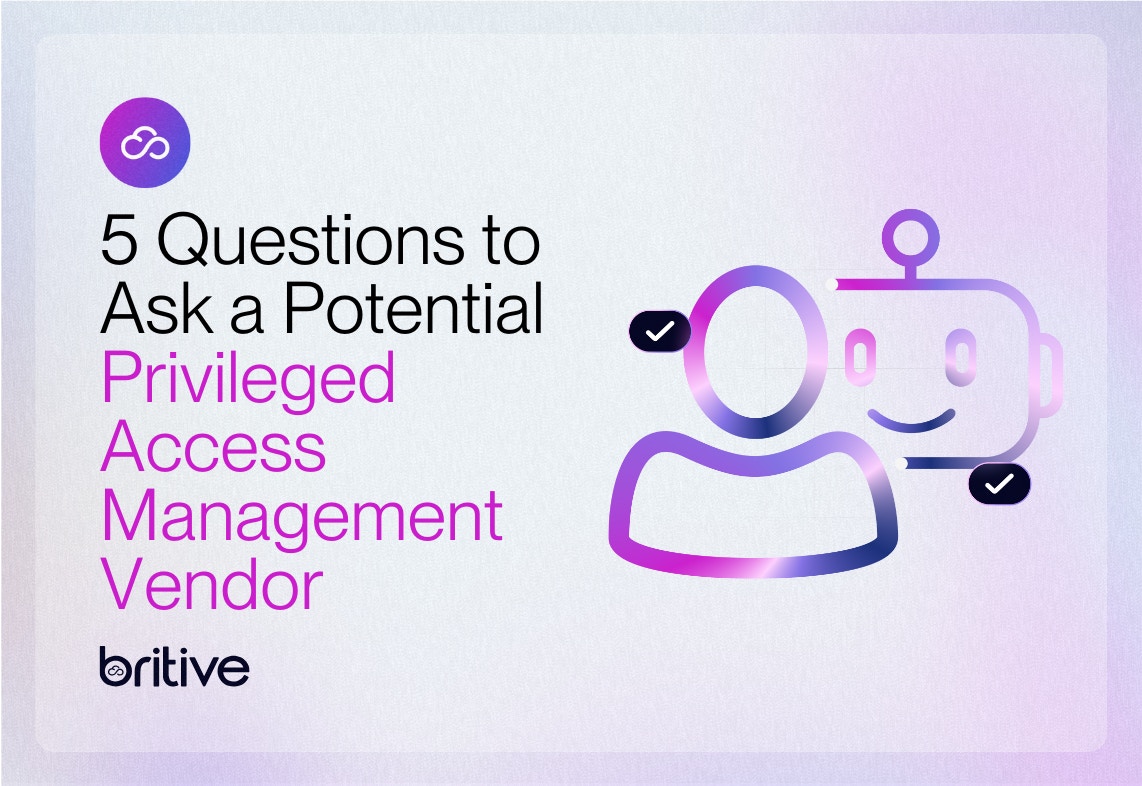


Back to resources
Streamlining Compliance for Financial Industries with Dynamic Multi-Cloud PAM
January 2025 / 4 min. read /

In the fintech and financial services industries, where strict regulatory standards like PCI DSS, SOX, and GDPR define operational boundaries, ensuring compliance is tantamount to protecting sensitive organizational and customer data. With the rapid adoption of cloud-first and hybrid strategies, these organizations face unprecedented complexity in managing privileged access across their environments.
Traditional Privileged Access Management (PAM) solutions often struggle to provide the agility and precision needed to meet these compliance demands, especially across increasingly complex environments. Inadequate or outdated identity and access management not only results in productivity delays but also drives compliance challenges and security risks higher.
Utilizing a modern, cloud-native platform offers fintech companies a way to simplify compliance while strengthening their overall security posture. Dynamic access management across public cloud providers, SaaS applications, Kubernetes clusters, and even on-prem environments allows businesses to scale and innovate rapidly without compromising on security and regulatory compliance standards.
Identity Security & Compliance Challenges in Fintech
Financial organizations must comply with a myriad of regulations governing data security, identity access management, and auditability.
Common challenges that organizations must face to meet specific regulations and security requirements include:
- Static, Over-Provisioned Access: Beyond leading to compliance violations, standing privileges across identities increase the attack surface area, leaving organizations more susceptible to credential-based attacks and breaches.
- Manual Auditing & Reporting Processes: Manual audit logs and report generation for compliance purposes can be time-consuming and prone to errors. Across multiple cloud infrastructure providers, SaaS tools, and on-prem resources, this can quickly become an overwhelming process.
- Complex Multi-Cloud Environments: Without a centralized access management platform or process, maintaining consistent access policies across AWS, Azure, GCP, and on-prem systems creates operational bottlenecks. Identity teams require knowledge and expertise across systems, and end-users are subject to long wait times that impact how they can deliver work.
- Non-Human Identity (NHI) Risks: With NHIs like API keys and machine identities growing exponentially with increased use of automations, their access is subject to the same policies and requirements as other human users. Because compliance and security were often treated as afterthoughts, managing and securing NHIs is often a significant undertaking.
Addressing Compliance and Security with Modern Multi-Cloud PAM
For fintech and financial services organizations, traditional PAM tools often fall short of addressing the rapidly evolving landscape of compliance and security. A modern cloud-native PAM solution should be purpose-built to address these challenges with the appropriate capabilities.
Singular, Unified Platform for Access Management
Having a centralized access management platform across infrastructure providers, tools, and all identities ensures that policy enforcement is consistently defined and enforced.
The ability to integrate quickly and manage all identities across all tools of a modern ecosystem simplifies security as well as operational efficiency.
Just-in-Time (JIT), Temporary Access
A proper JIT privileged access model allows organizations to grant users privileged access only when needed. The permissions a user has access to are defined by organizational policies to ensure compliance with internal security and regulatory requirements, as well as the principle of least-privilege.
With dynamic access provisioning, permissions are only granted upon request and are automatically revoked or expire after a set period of time. This significantly reduces the attack surface by eliminating long-standing credentials to achieve zero standing privileges.
Streamlined, Automated Logging and Reporting
Automated audit log collection and aggregation simplifies compliance reporting, reducing the amount of time that teams spend compiling and reviewing access.
For organizations implementing Zero Trust (ZT) principles such as zero standing privileges, the scope of access that needs to be reviewed periodically is often significantly lower, as there would be little to no standing privileges that would need to be reviewed and verified.
Compliance and Security as Strategic Drivers
For an intensely regulated space such as financial services and fintech, achieving compliance isn’t just a legal requirement — it’s a strategic advantage that builds a foundation of customer trust and operational continuity. Organizations that adopt dynamic, cloud-native access management can streamline their compliance processes while reducing operational inefficiencies and enhancing their security posture.
Addressing key challenges such as standing privileges and audit efforts enables companies in the financial industry to navigate compliance requirements without sacrificing the ability to move, scale, and innovate quickly.
Britive’s dynamic, cloud-native platform enables these businesses to achieve compliance with confidence, automating access controls, simplifying audits, and ensuring security across the entire environment. Want to learn more or see Britive in action? Schedule some time with our team for a customized demo.

